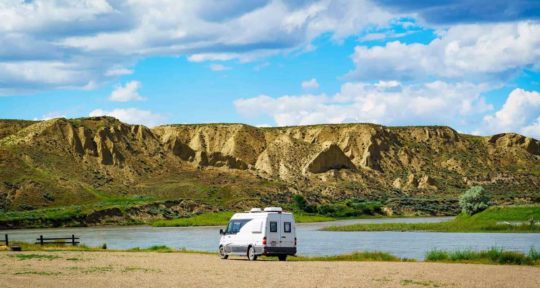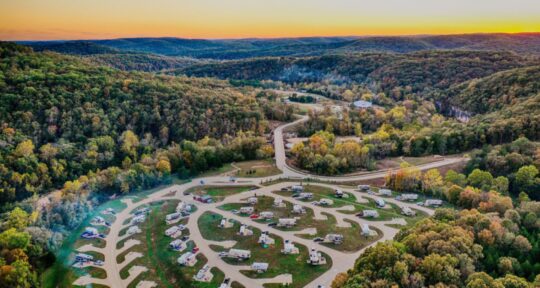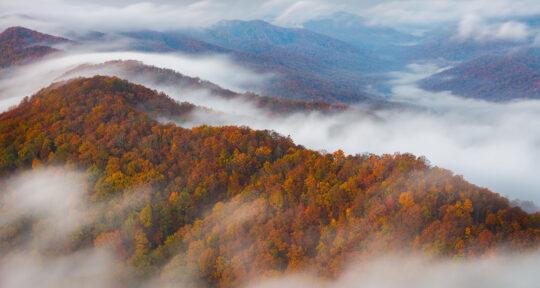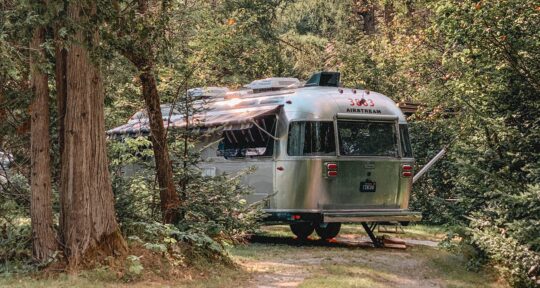There are as many different ways to camp as there are campers—from glamping to overlanding and backpacking, you can personalize your experience in the outdoors. If you’re new to camping or looking for a new way to get outside, consider car camping.
20 overlanding essentials: Gear and gadgets for the ultimate off-road camping adventure
How is car camping different from tent camping? It’s simple—you sleep in your car instead of a tent. Car camping is a low-barrier and comfortable way to enjoy the outdoors without investing in expensive camping gear. But even when car camping, you can still choose to pull up to a campground and set up a tent.
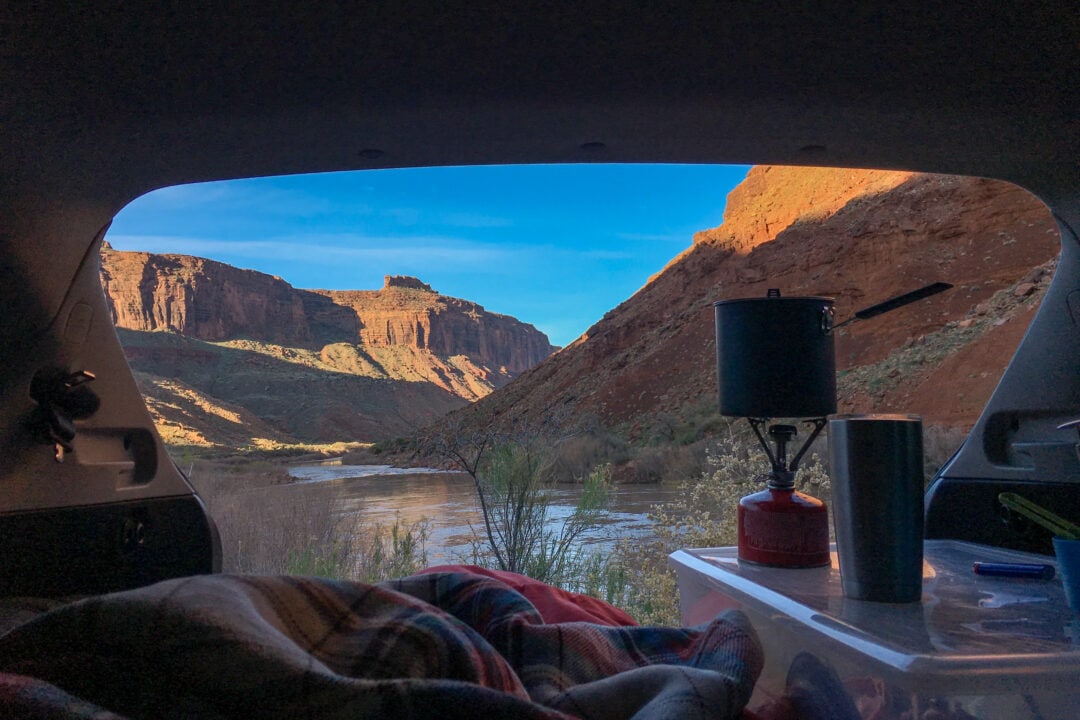
One of the many advantages of car camping is your ability to choose how, when, and where you sleep. This includes stealth camping. Similar to boondocking, stealth car camping is free camping where you sleep in your car without drawing attention to yourself. You can stealth camp in wild and urban areas—but be wary of local laws and stay safe.
Are you ready to watch the sunrise over the mountains from your car window? Or pull over to sleep whenever you feel like it on a long road trip?
11 states in 14 days: Car camping along the most famous routes in the U.S.
How to get started car camping
Research
One of the most fun parts about car camping is researching all the cool ways people do it and finding out what works best for you. YouTube is a valuable resource in learning how to set up your vehicle with whatever space you may have.
Visiting and supporting local gear stores will help you learn about the gear you may need, like a camp stove.
Joining Facebook groups and Reddit forums gives you access to people within the car camping community. They also offer used gear deals and answers to questions you didn’t know you had.
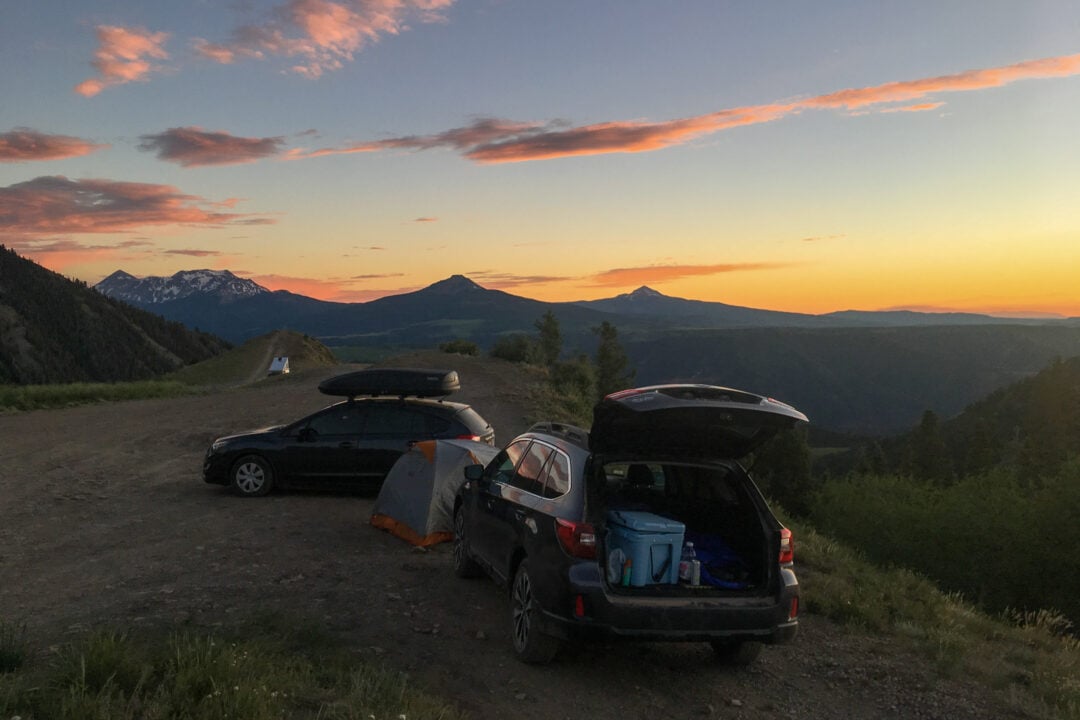
Buy and outfit your car
Your vehicle is the most important part of car camping. A car you already own will most likely suffice for your car camping needs. Just make sure it’s reliable and spacious enough for you to sleep and store gear.
You’ll need appropriate gear for camping, roadside essentials, and anything else you intend to use outside, like a hiking pack, running shoes, or fishing gear.
Explore local
Before you start planning a cross-country itinerary, consider using your first car camping trip as an opportunity to learn more about your local area. Start in a nearby park or campground. State parks are a good choice as they offer activities, amenities, and other resources to help ease you into a new kind of camping.
From tobogganing to spelunking: Wild and weird experiences await at these state parks
How to pick a car for camping
What makes a vehicle ideal for car camping? The best cars to sleep in have all-wheel drive or four-wheel drive capabilities. You should look for a vehicle with plenty of cargo space and weight capacity.
The best vehicle to sleep in is one that’s reliable, safe, and secure on and off the road. It’s also worth considering vehicles with good gas mileage or even electric cars, which are becoming more popular for car camping.
Here are some popular models for car camping:
- Jeep Wrangler
- Subaru Forester
- Subaru Outback
- Toyota 4Runner
- Hyundai Kona Electric
Regardless of what vehicle you drive, don’t let it stop you from car camping. Even a small car like a Toyota Prius can be suitable with the right setup.
Car camping essentials
Car camping essentials vary widely based on the person, weather, and destination, but here is a list of necessities to get you started.
Cooler
Coolers are not only crucial for preserving food but they also can be used as a table, camp chair, or beer fridge. Features to look for in a cooler are ice life, insulation, durability, and size. Look to Yeti, Pelican, and Canyon Coolers, which offer viable options depending on your needs and budget.
Lighting
You’ll quickly find that navigating around the campground by phone flashlight or firelight won’t cut it. It’s worth investing in lighting for utility and ambiance purposes. Headlamps, lanterns, or even solar string lights will do the trick.
Organizers
Organization is key for keeping everything orderly while car camping in a small space. Invest in inexpensive bins to separate your kitchen supplies, toiletries, clothing, outdoor gear, and other belongings. You can even designate areas of your car for specific items so you can quickly find, pack, and unpack everything you need.
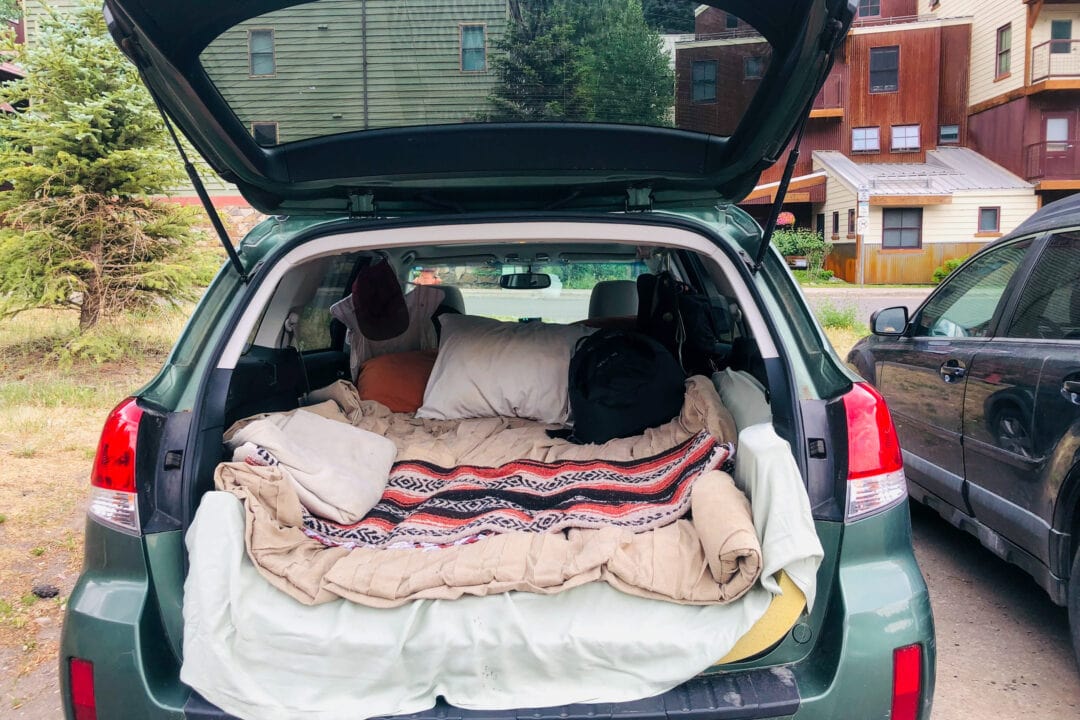
Sleeping pad
Aside from the vehicle, your sleep system is crucial. There are several ways to approach how you want to set up your car for sleeping. Do you want a system that easily folds up for day use? Are you traveling solo or with a partner? You can even build a sleeping platform to create more space and organization.
To keep things simple, start by investing in a quality sleeping pad. A sleeping pad can be anything from a self-inflating pad to a luxurious mattress topper.
Other items to consider for your sleep system are pillows, sleeping bags, blankets, and quilts. You may also want to bring a tent for nights when you want to switch things up.
Stove
A variety of stoves work for car camping. A popular and affordable option is the classic two-burner Coleman stove. If you’re traveling solo, a backpacking stove like the MSR PocketRocket is sufficient enough and saves space. Other items to add to your camp kitchen are a cast iron skillet, sharp knife, camp sink, utensils, and a folding table.
Water storage
You’ll need water for drinking, cleaning, and washing. Always have plenty of water in a storage container. If you know you will be camping near water sources, consider investing in a water filter.
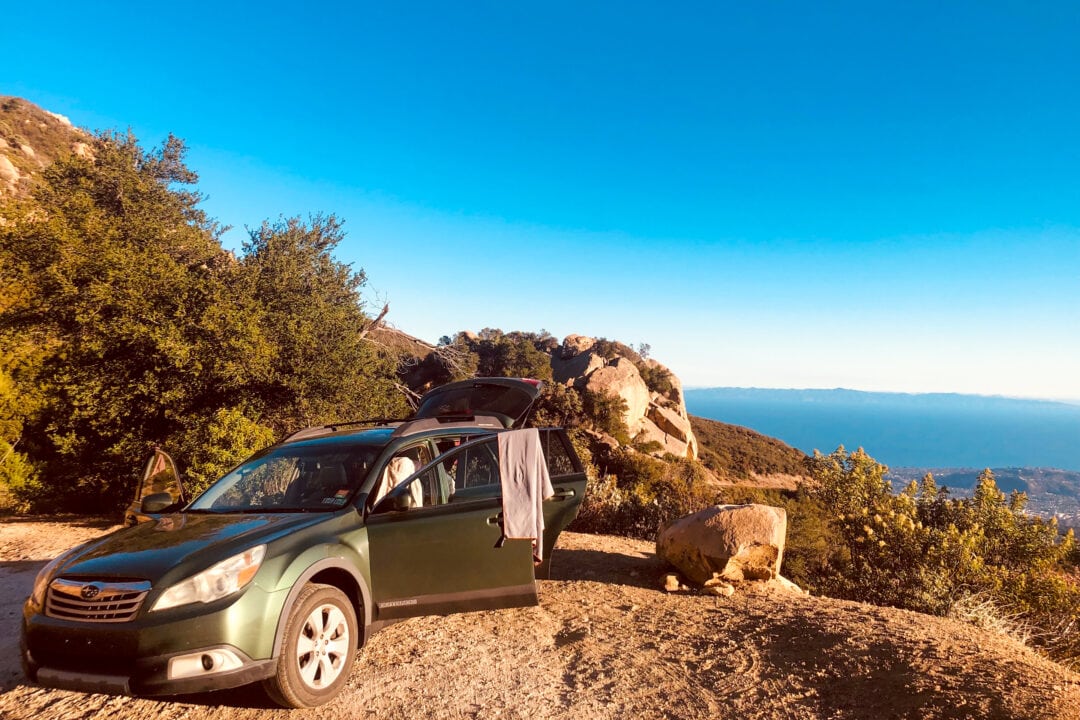
Car camping tips and tricks
- Crack open opposite windows when you sleep for a cross breeze and to avoid moisture build-up in the car.
- Purchase a GPS and satellite communicator for off-the-grid contact, and let someone know your plans.
- Boil water, pour it into a heat-safe water bottle, and place it in your sleeping bag for more warmth on cold nights.
- Bring pre-packaged foods, like overnight oats or pancakes, or plan one-pot recipes for when you need an easy meal with minimal cleanup.
- Carry cash for local shops and campgrounds that might not accept credit cards.
- Download maps, movies, music, and podcasts to make sure you can access them even without cell phone service.
How to plan a car camping trip
Traveling on a whim without a plan can be freeing, but for beginner car campers, plan your trip ahead of time. This will ease stress and help avoid some unforeseeable circumstances.
Here is a list of apps and websites to help plan a car camping trip:
- Roadtrippers features everything from campgrounds to things to do, places to eat, and road services along the way.
- Campendium helps you find places to camp, with in-depth reviews from other Campendium users. The app features boondocking sites, free campgrounds, RV parks, and more.
- iOverlander features places to camp off-the-beaten-path. It’s useful in finding places to stealth camp in urban places, like Walmart and Cracker Barrel.
- Overnight RV Parking is another resource for finding stealth camping options.
- Recreation.gov is a great resource for finding federal campgrounds, like Bureau of Land Management (BLM) and U.S. Forest Service sites. You can also make reservations through this site.
- GasBuddy is an app to help you find the cheapest gas on your road trip.
Other resources that are popular with car campers include Google Maps and AllTrails. It’s also worth checking with gear stores in your destination as these will often share local recommendations and current conditions.
To comfortably camp in your car, start by investing in a sleep setup, review local ordinances if stealth camping, and understand your vehicle’s safety precautions.
To keep your car cool while camping, you can make or purchase insulation shades, sleep with opposite windows cracked open for a cross breeze, and use a battery-powered fan.
You can legally sleep in your car in campgrounds, select businesses, some rest stops, visitor centers, BLM Land, and other places across the U.S. For specifics to your area, utilize Overnight RV Parking or the other popular car camping apps and websites listed above.
It’s safe to leave your car windows shut when you sleep in your car as long as the engine is off, but you’ll most likely be more comfortable if you leave your windows open slightly (depending on the climate).
The safest place to sleep in your car is in legal car camping areas, whether that’s a campground, BLM land, big box store, rest stop, or a visitor center.
There are several ways to cover a window while sleeping in a car. You can buy window covers or curtains or buy a roll of Reflectix (insulation) material and make your own window covers.
Car camping can be staying at or near a trailhead before spending a few days hiking in the backcountry. It can be pulling into a new town late at night or waking up to a spectacular view on public lands.
How to find a safe place to park your RV or van for the night
It can also be a way to save money during a cross-country road trip. It gives you the flexibility to sleep wherever you want because you have everything you need in your car. Car camping is just another vehicle, literally and figuratively, for an adventure into the outdoors.
This article has links to products that were carefully selected by our editors. We may earn commission on your purchases from these links. Visit this page for the full details of our affiliate marketing policy.
